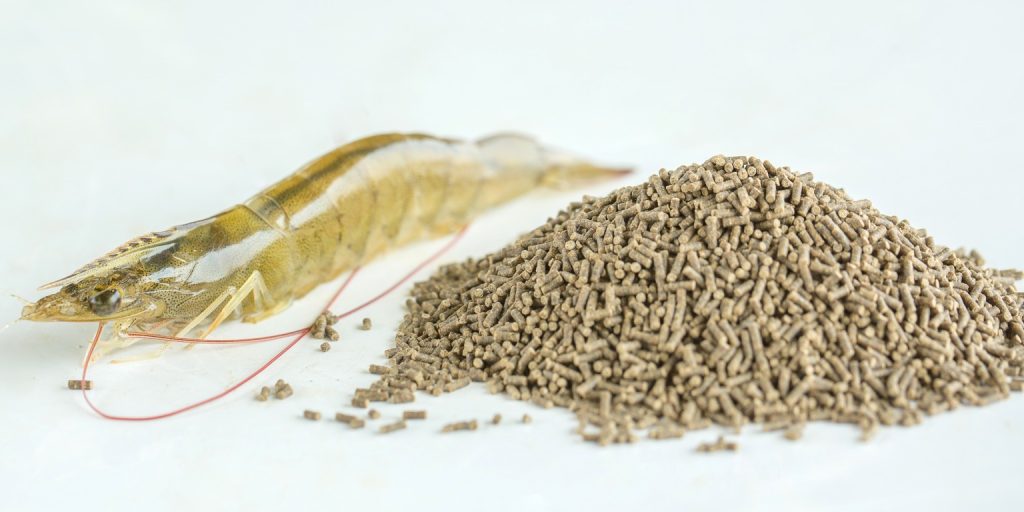
Shrimpl’s Turning Feed Mills Technical Support into Scalable Service Bundles
Transform traditional service into data-driven impact, strengthening farmer loyalty, earning lender confidence, and powering sustainable growth.
Abstract
Feed mills have long built their reputation on trust, expertise, and hands-on support. But as competition grows, traditional service models struggle to keep up or prove real impact. Shrimpl helps feed mills change that by turning technical support into clear, data-driven service bundles. With digital farm plans, real-time tracking, and verified results, feed mills can scale their expertise, show measurable value, and gain access to new financing opportunities.
Feed mills once competed on product quality — now they win on the value they deliver.
Not long ago, high-quality feed that achieved better FCR and faster growth rates defined success. Today, that’s no longer enough. Farmers now choose feed mills based on the service bundles that come with the product — from seed and pharmaceutical integration to technical support, mobile labs, and on-site consultancy. The value is no longer in the feed bag itself, but in the measurable impact of the services behind it. This shift is especially clear in Asia’s billion-dollar shrimp sector, where nearly every feed mill offers a standardized farming model and field support. Providing effective technical services has become one of the strongest differentiators in the market globally.
Most feed mills still lack the data backbone to prove impact and scale success.
Despite these efforts, most feed mills still lack a data feedback loop to truly understand how their technical advice is applied on farms — what works, what doesn’t, and how to improve. Valuable data exists, but it’s scattered across Excel sheets and personal notes. When experts retire, years of experience are lost; when new team members join, they start from scratch. Even documented standard operating procedures (SOPs) quickly become outdated or fragmented across multiple versions. The challenge isn’t adopting technology for its own sake — it’s answering core business questions: Which interventions improve FCR? Which farms need attention today? How can success be replicated across all customers? The feed mills that answer these questions with data will define the next era of aquaculture leadership.
“This year, we aim to scale our proven farming model to more clients. The real challenge is ensuring it’s applied effectively and consistently — building not just adoption, but trust.”
Regional Technical Director – Shrimpl’s Feed Mill Client in Asia
Shrimpl provides structure, turning expertise into measurable results.
Step 1. Turn expert know-how into structured, digital farming plans.
Transformation begins with structure. Feed mills can start by converting their team’s best practices into clear, trackable farming plans using Shrimpl’s Farming Plan module. This isn’t complex feature — it’s a simple way to translate expert knowledge into practical workflows farmers can easily follow: when to feed, what parameters to monitor, and what thresholds trigger action. Each activity — from water checks to feed adjustments — is scheduled, tracked, and measurable. This leads to the consistent guidance for farmers and full visibility for technical teams.
Step 2. Begin with top-performing farms to build confidence and results.
Most feed mills start with a few of their best farms. As farmers follow these structured plans, data naturally begins to flow into the Shrimpl platform — water quality, feeding logs, biological metrics — all captured as part of daily operations. This creates a reliable foundation for scaling later while demonstrating immediate, measurable impact.
Step 3. Use real-time data to anticipate issues and deliver timely support.
Once farmers share their data, technicians gain real-time visibility into every farm they support. They can detect early warning signs and intervene before problems escalate. When a farmer reports slow growth, the technician no longer needs to guess — instead of asking, “How’s it going at your farm?”, they can say, “I noticed the DO dropped Tuesday night — did you observe anything unusual?” This transforms the relationship from reactive troubleshooting to proactive partnership, where advice is timely, contextual, and data-driven.
Step 4. Deliver consistent results and institutionalize expertise.
By combining structured plans with live farm data, feed mills turn fragmented fieldwork into a coordinated system of measurable improvement. Every technician works from the same playbook; every farmer receives consistent, verified support. Over time, this creates not just better outcomes for individual farms — but scalable, repeatable excellence across the entire customer base.
Step 5. Unlock new opportunities with real-time data and trusted transparency.
Data doesn’t just improve farming — it unlocks financing. One major challenge for partners is the delay caused by manual data recording. Staff spend hours transferring handwritten notes into digital forms, often only once or twice a day due to heavy workloads. Shrimpl solves this by integrating IoT equipment, enabling real-time data flow directly into the platform.
For those concerned about equipment costs, Shrimpl connects feed mills with financing partners who fund innovation — but only for farms with verified data, ensuring transparency and accountability.
“At Shrimpl, data ownership stays where it belongs — with the farmers. They have full control over what to share and with whom. Shrimpl doesn’t own or access user data without consent. By making aquaculture data transparent and verifiable, we help turn it into a financial asset that builds investor confidence and fuels sustainable growth.”
Ciaron McKinley – Shrimpl’s CEO and Co-founder.
When the loop closes, a new service ecosystem — and competitive moat — emerges.
The loop is complete. Everyone wins. Banks fund farm upgrades — sensors, automatic feeders, aeration systems — while feed mills provide the digital platform that makes these tools valuable. Farmers gain access to bundled solutions they couldn’t afford alone, creating shared growth for all parties. With verified data and access to capital, the feed mill’s role transforms. It’s no longer just a feed supplier but an enabler of farm transformation through financed, performance-backed service bundles. Competitors can replicate products or hire talent, but not years of verified farm data, adaptive protocols, and trusted partnerships. Your connected ecosystem becomes your strongest moat.
Leadership in aquaculture now belongs to those who can prove their impact.
The feed mills that will lead aquaculture’s next decade won’t win through price or manpower, but through proof. By structuring expertise, capturing data, and closing feedback loops, they will transform invisible know-how into visible, measurable value. These data-driven ecosystems don’t just scale efficiently — they build credibility, attract financing, and drive continuous improvement. The question is not whether this transformation is coming — it is whether you will lead it or follow. In a market where every feed mill claims to offer more, the only lasting advantage is the one you can prove with data.
Want to learn how leading feed mills scale technical services with Shrimpl?




Leave a Reply